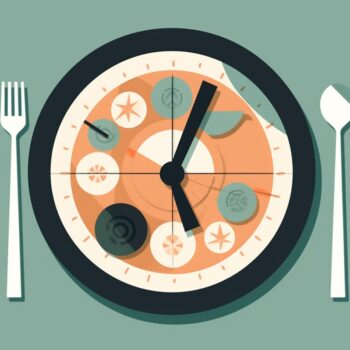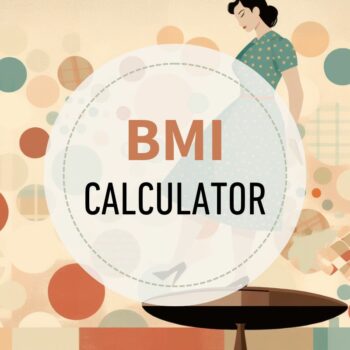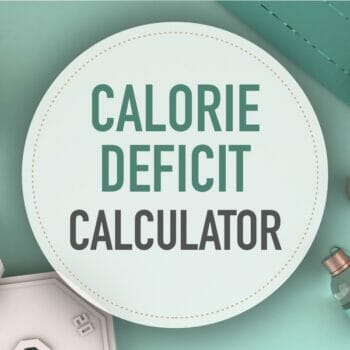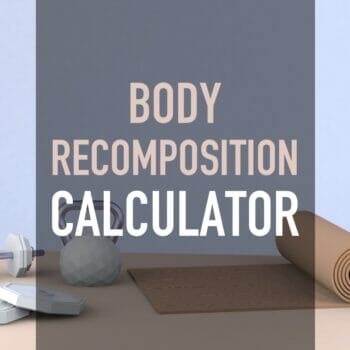Macro Calculator
This free, easy-to-use macro calculator gives you your optimal macronutrients and calories. It’s a weight loss or muscle gain calculator for both women and men.
Combine with macro counting or flexible dieting to reach your goals faster.
How to get leaner and stronger?
Our comprehensive macro-based fat loss program shows you how. Learn more
How do macros work?
The foods we eat are made up of three macros (macronutrients). These are carbohydrates (carbs), protein, and fat.
Chicken is high in protein but has no carbs; rice is high in carbs but has very little fat or protein. The three macronutrients provide the body with energy and raw materials for growth and repair.
By calculating the appropriate daily calorie amount for you, we can then break this down into the best macronutrient ratios to achieve weight loss.
Basic steps for macro counting
- Enter details into the calculator
Make sure to choose the correct goal. - Take note of your calories and macros
These will be the targets you are aiming for each day. - Track your macros
Use an app or pre-plan your meals. - Measure results
Don’t use basic weight scales.
Use proper body composition scales (we recommend Renpho) to measure fat and muscle mass changes.
What is a good macro ratio for fat loss or muscle gain?
Your macros should be based on your Total Daily Energy Expenditure (TDEE) and goals.
The calculator defaults to the best macro ratio proven to work for most people.
This ratio is:
- 30% fat
- Protein is 0.65 grams per pound of body weight,
- The remainder is carbs.
Depending on your goal, this will be either a calorie deficit or a surplus.
You can go further and make more adjustments: Perhaps you’re an extreme endomorph and do better with fewer carbs. Or perhaps you have one kidney and need to eat less protein.
You can fine-tune your results with a bit of math. See how to change your macros here.
What is a good protein ratio?
Rather than a percentage, proteins are based on your body weight. Our calculator has three settings:
- Moderate adjusts the ratio to 0.65 grams per pound of body weight.
This is appropriate for sedentary individuals or people with higher body fat percentages. - High is for active people with moderate strength training and an average body fat percentage.
- Maximum will set the ratio to 1 gram per pound.
This amount is good for bodybuilding and gaining muscle mass. You must be doing intense training.
Find out how to fine-tune your protein ratios when counting macros
Fat macro ratio
Set fat at 30% of daily energy expenditure.
Most people do very well with this amount of fat. See more about choosing the best macro fats. Because of high-fat diets like keto, many people are now eating more fat than they need to.
Carbohydrate macro ratio
Once you’ve calculated protein and fat, the remainder of your daily calories should be from carbohydrates.
Carbs fuel your body and workouts – and are the body’s preferred energy source.
If you are coming from a low-carb background, this may seem high. However, according to respected nutritional research, this is a moderate amount of carbs.
If you are eating according to your TDEE, the notion that carbs cause weight gain or stop fat loss is incorrect.
Using as a Calorie Deficit Calculator
As a weight loss calculator, this tool establishes a safe calorie deficit only.
The Lose option puts you in a 20% calorie deficit, promoting safe, steady weight loss.
The best macro ratio for body recomposition
If you want to recompose your body (lose fat and gain muscle simultaneously), then use the body recomposition calculator.
Macro ratio for maintenance
The Maintain button shows you the macro levels to maintain your current weight.
This is great if you have lost weight and don’t want to gain it back.
Macro ratio for muscle gain
The Gain button puts you in a 20% calorie surplus.
The macro breakdown is designed to build muscle fast in conjunction and must be combined with a comprehensive weight training program.
Underweight people can also use it.
TIP: Try starting with the maintenance goal and gradually increasing calories if you want lean muscle gains.
Calculating macros using your body fat percentage
The calculator uses your body weight to determine calories and macros.
However, you can obtain superior results by using your body fat percentage. The calculator allows you to choose which method: Normal for body weight, Lean Mass for fat percentage.
When to choose the Lean Mass Formula
If you are lean (have a low body fat percentage), choose the Lean Mass formula and enter your body fat %.
If you are classified as obese and have a lot of weight to lose, the lean mass formula is superior. You can read more about macro counting and obesity.
Help? Calculate your ideal body weight or get an assessment of your body fat percentage.
Why the difference? Muscle cells burn more calories than fat cells, so the more accurately we measure this, the better your results will be.
How to calculate macros per meal
You can break this down into meals once you’ve calculated your daily macros in the calculator.
Choose from 2 to 6 meals daily to see the macro ratio you can track for each meal. For some people, this is easier, but for others, this is too much detail.
Do what works for you.
Meal Plans
See a 5-day macro-based meal plan. It includes three meals and two snacks per day.
Macro calculator activity level settings
A higher activity level means a higher daily calorie goal.
For example – if you maintain your weight at 2,000 calories per day, adding vigorous daily exercise means you need more calories to maintain your weight.
If you are sedentary and trying to lose weight, adding exercise will increase your daily calorie goal.
The idea seems counter-intuitive, but more energy is required to fuel your workouts. More workouts lead to increasing metabolism; therefore, more fat is burned!
Undereating is one of the leading causes of the weight loss plateau.
So many of our clients previously “hit the wall” with dieting. They would continually reduce calories, stop losing fat, and gain weight when they eat a little more.
Macro counting defeats this by prescribing the right food and calorie levels.
Which activity level do I choose?
- Sedentary: Just regular everyday activity like a bit of walking, a couple of flights of stairs, eating, etc.
- Light: Any activity that burns 200-400 calories (females) or 250-500 calories (males) over your sedentary amount.
- Moderate: Any activity that burns 400-650 calories (females) or 500-800 calories (males) more than your sedentary amount.
- Extreme: Any activity that burns more than 650 calories (females) or more than 800 calories (males) in addition to your sedentary amount.
Other options for determining your calorie burn
- Use our calories burned calculator – it accurately assesses over 380 activities.
- Use a fitness tracker – like a Fitbit or Apple Watch (note that they can overestimate calorie burn).
- Use a suitable app – like MapMyFitness
Why should I eat more when I exercise more?
High physical activity not fueled with enough calories will lead to muscle catabolism (breakdown of muscle fiber).
This lack of nutrition could stall your weight loss, so eat up if you love to exercise!
I’ve got my macros – now what?
Once you’ve identified your target daily macros, you must determine the macros in all your foods.
By tracking them daily, you can reach your recommended macro targets that encourage fat loss, muscle gain, or whatever your goal may be.
You can learn more about the macro counting system and the flexible dieting philosophy. Many people use an app like Myfitnesspal to track macros.
For more specifics on what to eat – see a sample macro meal plan or a list of macros for familiar foods.
View article sourcesSources
- Mifflin, M. D., St Jeor, S. T., Hill, L. A., Scott, B. J., Daugherty, S. A., & Koh, Y. O. (1990). A new predictive equation for resting energy expenditure in healthy individuals. The American Journal of Clinical Nutrition, 51 (2), 241-247. Link
- McArdle, W. D., Katch, F. I., & Katch, V. L. (2010). Exercise physiology: nutrition, energy, and human performance. Lippincott Williams & Wilkins. Link
- Jequier, E. (1994). Carbohydrates as a source of energy. The American journal of clinical nutrition, 59(3), 682S-685S.
- Lemon, P. W., Tarnopolsky, M. A., MacDougall, J. D., & Atkinson, S. A. (1992). Protein requirements and muscle mass/strength changes during intensive training in novice bodybuilders. Journal of Applied Physiology, 73(2), 767-775. study abstract link
- Grundy, S. M. (1999). The optimal ratio of fat-to-carbohydrate in the diet. Annual review of nutrition, 19(1), 325-341. abstract
- Conlin, L.A., Aguilar, D.T., Rogers, G.E. et al. Flexible vs. rigid dieting in resistance-trained individuals seeking to optimize their physiques: A randomized controlled trial. J Int Soc Sports Nutr 18, 52 (2021). https://doi.org/10.1186/s12970-021-00452-2
2,104 Comments


 Menopause Macro Calculator
Menopause Macro Calculator Intermittent Fasting Calculator
Intermittent Fasting Calculator BMI Calculator
BMI Calculator Calorie Deficit Calculator
Calorie Deficit Calculator Body Recomposition Calculator
Body Recomposition Calculator
Hello just a quick question so for your fat intake which one should you be counting the total fats or the saturated fat??
Total fats.
How do we know if we should have our fat loss set at 20, 15, or 10 percent?
Hi Leon, Use 20% if you have more than 10 pounds to lose. Use 15% or 10% if you have less than 10 pounds to lose and you want to also build more lean muscle in the process.
Hi there Ted,
so a couple of months ago I wrote a comment about having my doubts with using tools for calculating macros. Basicly cause I’ve seen so many different tools, I had no idea where to start.
Well, to tell you the truth : this tool actually helped me during my main goal; fat loss. I already went from roughly 20,3% bodyfat down till 15%, but from there it stalled. Also cause it was hard for me to stay consistent with eating.
I calculated with your tool what I needed to eat for some fat loss and I’ve lost another 3% of fat, meaning I have a fat percentage of 12. I’m very stoked about this. My clothes don’t fit anymore (especially my trousers are too big now) and also my bellyfat reduced even further.
I’m gearing up for powerlifting, so that means I have to start eating a lot more. Will be a tough challenge cause I have been in a deficit for a while already, but I’m sure I will be fine.
Kind gards,
Thomas
Hi Thomas! Thanks so much for taking the time to check back in and great job with getting to 12% body fat! I’m so glad that our macro calculator proved useful. As you transition to building muscle, just gradually increase your calories/macros so that you can achieve lean gains otherwise you risk gaining back the fat you just worked hard to lose. Keep crushing those goals!
Thanks a lot! Will do!
Is the carb macro net or total ?
Total carbs.
We find that tracking total carbs provides a ‘buffer’.
Example: You eat something that’s 50 g total, but 40 g net, this gives you 10 grams spare. Because we always tend to eat more than we actually think we do… this gives a good buffer.
Hi Ted
If I reduce my maintenance calories by 20% to lose weight, will I gain the weight back once I eat at my maintenance level again? In the past, when I diet I did lose the weight but as soon as I go back to ‘normal’ I gained the weight back again. Please help. I really want to keep the weight off. Thank you
Hi Ted,
Quick question- do we need to adjust our macros for training and non-training days on maintenance?
Hi Nina, Yes and it’s even more important to do this during the maintenance phase or you’ll be in a calorie surplus on your rest days which will gradually cause some fat gains.
Thank you! How much deficit should you be in during maintenance?
You don’t really want any deficit when in maintenance. But you can create a little “buffer” by setting your maintenance weight as 5 pounds lighter.
Hello, Any thoughts on losing weight for a 56 year old menopausal woman. I have tried everything and it just won’t come off. It’s belly fat which I’ve never had until the last 2 years. I’m very active and exercise often. I’m only about 10-15 pounds overweight but I HATE it! 5’6″ 150
Hi Steph, I’ve coached a lot of women in your stage of life and it typically involves some trouble shooting to find what exactly is keeping the fat from breaking down. Sometimes it can be from too much exercise which is placing too much stress on the body causing a cortisol response. Other times it’s diet related. No matter the reason, patience is key since it will just take longer, so sticking to a method for longer than a couple of weeks is important.
Hello! I am 52, 183 and 6ft tall female. I have a sedentary job however work out 4-5 days a week. I do strength, core, weights and walk about 3.8 mph, array of things. I was told to eat 1850 calories a day with 102 protein, 180 carbs and 80 fat. Been doing that but stuck like Chuck, no loss in quite a while. From your numbers I am not eating enough!? And if I only workout 4 days do I need to adjust calories. Just trying to get moving again. Thanks for your help! Sigh…..
Hi Eden. You should eat less on days you don’t work out and more on days you do. Also it seems like you should be shooting for a little more protein and less fat. If you need help getting things dialed in consider my Macro Solution Ultimate package where I’ll do optimal calculations for you. The Macro Solution
Seems like a lot of work I think I’d rather just eat the same thing every day
If I’m around 14% body fat at 5’9 178 and have my weight loss set at losing 15%. How much weight should I focus on losing per week to know if I’m at an effective weight loss range?
Hi Leon, At a 15% deficit you should be seeing about .5-1 pound per week of fat loss.
Greetings,
So I am trying to lose 35lbs to enlist into the Air Force. I work out 2-3 times a week doing strength training, I add in cardio throughout the week. In May, I was recommended to eat 1870cals with macros at 180C/175P/60F. I weighed 245.5. Currently, I weigh 250.8 (a little about me, I’m 6’2F, yes I’m tall 😁), the scale is going up and I’m beyond frustrated. What am I doing wrong?
Hi Cookie, sorry to hear that you’re frustrated. Firstly your macros add up to 1960 calories, secondly because you have a more than 50 pounds of fat tissue you also need to adjust down some for that and you should be eating less on days that you don’t exercise. I’d be happy to get everything dialed in for you so that you can start losing. Choose the Macro Solution Ultimate option here: The Macro Solution
I’m always wondering what really is the point of these calculators. Yes, it is a great way to track what you eat on a day and is important to get an indication to get you started, no matter what your goal is.
But the thing is, I have tried dozens of these calculators and man they are all inaccurate as possible. From the lowest to highest calories intake on calculating for fat loss, there was a difference of a whopping 750 (!) calories!
Hi Thomas, All calculators provide just an estimate but mine uses one of the most trusted formulas in the industry and gets results. I use this formula with all my clients and personally whenever I change up my personal goals.
Hi Ted, thank you kindly for your reply. Well, the thing is that about a year ago I started training with a personal trainer and he gave me a list of things to eat so I could lose fat. I was at roughly 20,3% fat and currently I’m at 15%. Great achievement, but I want to go down to 10 %.
The list with what to eat, was roughly around 1750 calories per day, but I’ve noticed that wasn’t enough, I just felt as weak as a sponge at some point. Right now I cranked it up to around 2120 calories per day, having a balanced intake on carbs, protein and fat.
I train about 3 – 4 times week, doing weight lifting and of course I have a day of rest between each training day. But I start noticing my weightlifting isn’t improving anymore, I don’t know if I should eat even more or not. Cause I don’t want the fat loss to halt.
No worries, happy to help. Add in 100-150 to your workout days only and then evaluate after a couple of weeks by assessing your gains and body fat percentage. I think you’re right in thinking that you aren’t eating enough. It can be a balancing act for sure.